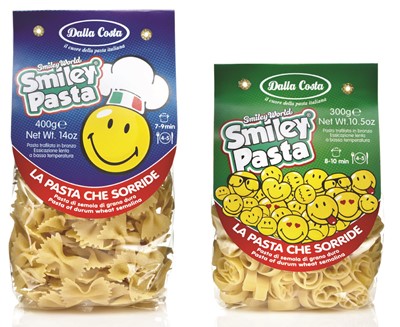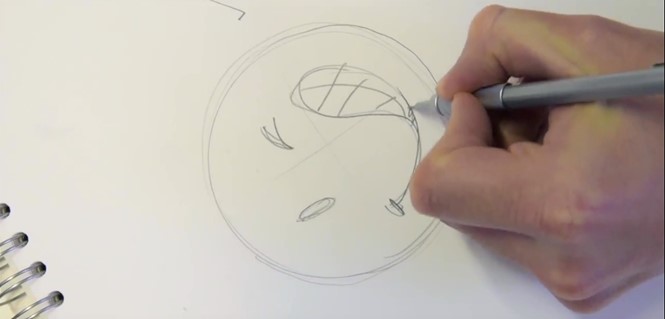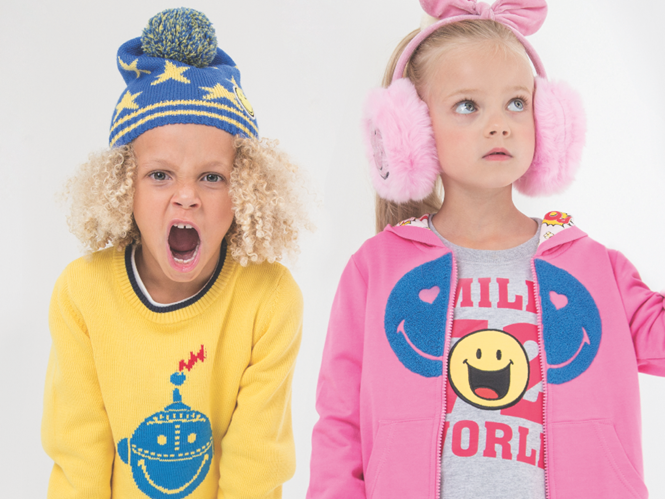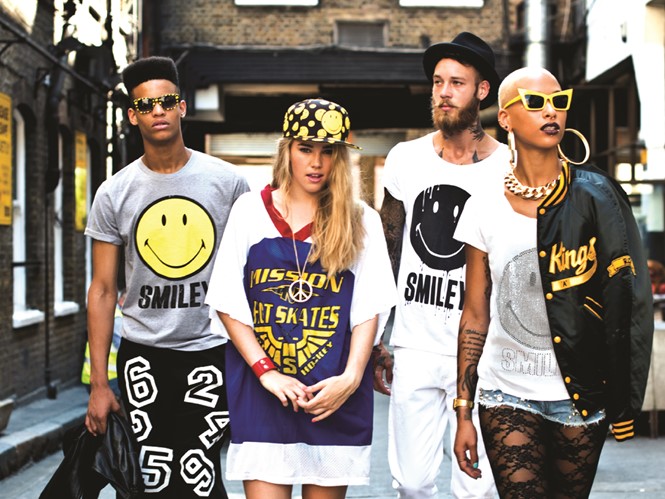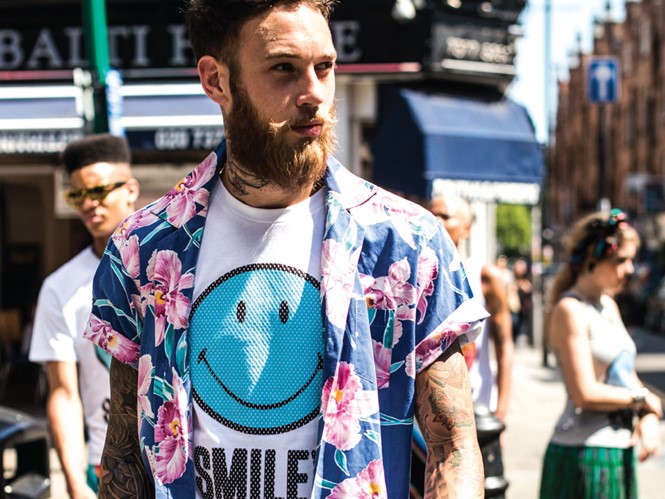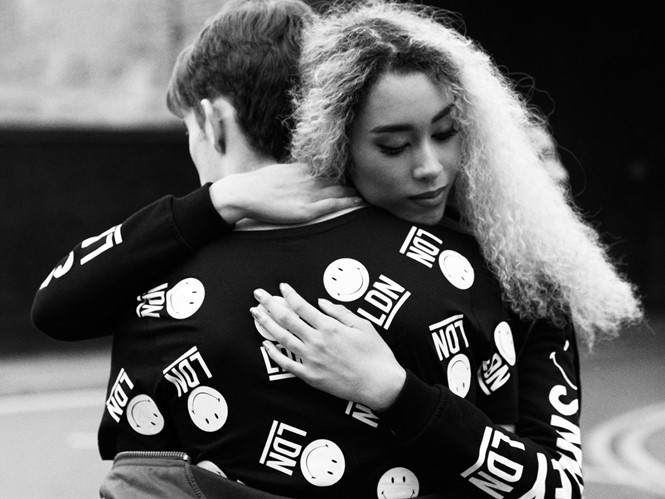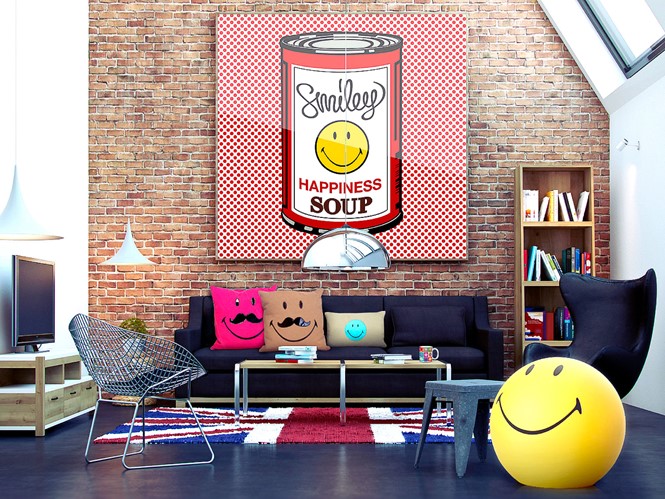Profile: Smiley World
From emojis to music deals and lifestyle brands to digital signage, the Smiley is both a product and a brand logo. Jeremy Owen speaks with the brand managers behind Smiley World
If Smiley could talk it might seem like it was making things up. This simple little drawing has been the literal face of cultural and social movements, a fashion choice for a multitude of famous people, has appeared in Hollywood movies and onstage at the Olympics, can be found on every conceivable product and now rivals the alphabet as a communication tool – if there was a device to count how many times its distinctive visage has been absent-mindedly doodled during a boring board meeting, the data might even usurp the billions of times it is now casually used every day via SMS or WhatsApp.
The ‘happy face,’ to use the non-trademarked moniker, is one of those visual icons that seems inevitable, like it has been around forever, that it is one of those things that emerged into the world fully formed. The reality is that it belongs to Smiley World, the eponymous holding company carefully managing this dispersal into ubiquity. Brand expert Wally Olins once said of branding practice that he found it, “Quite extraordinary that a recourse which is generally regarded as so significant, and is now so ubiquitous, is so little understood.” With that in mind, instead of just a cute little pictogram, Smiley is a fully trademarked corporate device that also exists in the public sphere, freely available to all, with both usages remaining fully authentic to their intention. In that regard, Smiley starts to look less like the zenith of disposable popular culture and more like a concise lesson on how to construct a brand that maximises both visual recognition and meaningful emotional resonance.
The story of Smiley begins in Paris in 1972*, just after the bubble of international positivity that was the 1960s had spectacularly burst. As a means of bringing some much needed good humour back to the general populace, Franklin Loufrani, a freelance journalist, and Pierre Lazareff, chief editor of prominent French national newspaper, France Soir, devised a scheme by which a smiling face would appear as means of highlighting positive stories. The first face appeared on the cover of the Saturday, 1 January 1972 edition, to immediate success.
Smiley World has trademarked the device, but other creators have laid claim to being the originator. In 1963, U.S. children’s TV show, the Funny Company, used a similar symbol while in another part of the U.S., Mutual Life Assurance of Worcester, Massachusetts was also using a smiling face as the visual identity for an employee behavioural change programme. Perhaps more famously, a few years later, brothers Bernard and Murray Spain devised their famous ‘Have a Nice Day’ novelty good product line with yet another version of the symbol.
While some might have seen the France Soir’s use of the Smiley as enough, the savvy Loufrani had already gone a step further. In addition to being a journalist, he was also a licensing agentfor entertainment characters with a portfolio including famous properties such as Babar and the Marvel Comics superheroes. In 1971, after delivering an initial sketch for the newspaper ruse, he saw the potential for marketing the symbol like a character, trademarked his idea in Europe and established Smiley World as a means of exclusively managing its usage. By applying a proven licensing business model Loufrani was able to successfully lease the symbol for use by product manufacturers. Fast-forward to 2016 and Loufrani’s son Nicolas is now at the helm of a business that has evolved well beyond its origins. Smiley World’s artwork library alone now consists of over 10,000 designs based on the original design with new graphics added according to trend every year. Its product range spans 12 industries and every conceivable product group and it serves a customer base that ranges from newborn babies to adults.

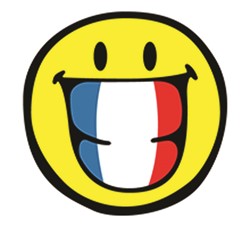
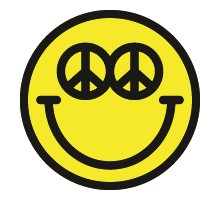
Crucially, Smiley World does not actually produce anything tangible but rather operates as its own brand activation agency. Unlike the more traditional licensing approach, all concepts and intellectual property come from the company itself, not the licensees, meaning that all products are considered the company’s own. It constantly monitors its offer for gaps and then actively approaches companies to offer partnerships. Most often Smiley World’s products are rooted in a cultural context, the most successful association being the music scene, a relationship that has been cultivated via seeding, brand extension and events. This has worked so well that the process, to a greater extent, now propagates itself with celebrity artists and designers and other brands queuing up to collaborate. Interestingly, for these celebrity- endorsed times, they claim to have never had to pay anyone to partner with them or to wear their products.
It is an aggressive approach that seems to have paid dividends. The commitment to product development and careful communication of the brand values – namely, ‘to make the world a happier place, to bring happiness and joy’ – have made the icon popular across three decades and, thanks to the emoticon, business shows no signs of declining. The logo is now so famous that it has achieved a rate of 97% as a global symbol of positivity. What is it about Smiley that contributed to this success? Is it purely down to excellent corporate strategy or is it more fundamental than that?
To quote Olins once again, “Branding is a profound manifestation of the human condition.” Branding, he suggests, can be viewed as a fundamental human behaviour. Indeed, in the simplest terms, everyone, whether private individual or multinational organisation, needs an identity. To translate this into product manufacturing terms, the means of production have now become so sophisticated that the output has standardised, meaning that there is little to distinguish end products. It is at this point that the practice and science of branding becomes necessary. In order to sell products that are essentially the same, branding, led by the facility of the logo, aids the consumer in the choice between products by creating a backstory around the product to install a sense of meaning with which they might identify.
Smiley is different. In its case, the corporate logo is in a symbiotic relationship with the product that completely reverses branding practice, one cannot exist without each other. With equally famous logos, such as a bitten apple, swooshing checkmark or glowing arches, the products instill the basic meaning into the logo but, lest that be forgotten in the noise of hundreds of other
products evoking the same, a whole arsenal of different job descriptions combine to reinforce and reiterate that first essential message. This product provides a service to and will assist in the user’s existence to a better degree than that product, therefore people should like this particular product over that one. With a happy face, the meaning of the brand comes from the form and design of the Smiley itself. So when it is viewed in application, a mug is just a mug but a Smiley mug makes you happy. An SMS is just a set of words with potential to be mis-interpreted, but the use of an emoticon suddenly makes any humourous intention clear.
The success of Smiley seems like it was always guaranteed. It is a high performer in pure graphic design terms. It’s easily understandable as it cannot help but speak of positivity and happiness. Plus it’s easy to draw, either by hand or in pixels, so it is ideal for application on pretty much anything. It is also successful because it is a modernisation of what is actually a traditional image, something that people inherently know and recognise regardless of ethnicity or background. Youngsters quickly learn that a smiling face from those around them is a good thing, a fact recognised and reinforced by visual culture from a historically early age. The first recording of a smile has been found in a stone dating from 2500 BC, discovered in a cave in Nimes, France, ancient Greece turned it into a theatrical mask, and what else is the Mona Lisa but a masterful rendition of a smile?
What Franklin Loufrani recognised and trademarked was that the symbol of a happy face operates in the same way as a typographic letterform or hieroglyphic. It is an abstract or simplified form of representation that only requires itself to function. In practical terms it is perfect for the licensing business because whether scribbled on a wall or printed across a product it will still have the same meaning. For brands and creatives, the Smiley is something of a Holy Grail – a brand whose the desirable product is the corporate logo itself, with no need for supply chain, means of distribution or external marketing to manufacture need in the mind of the consumer.
